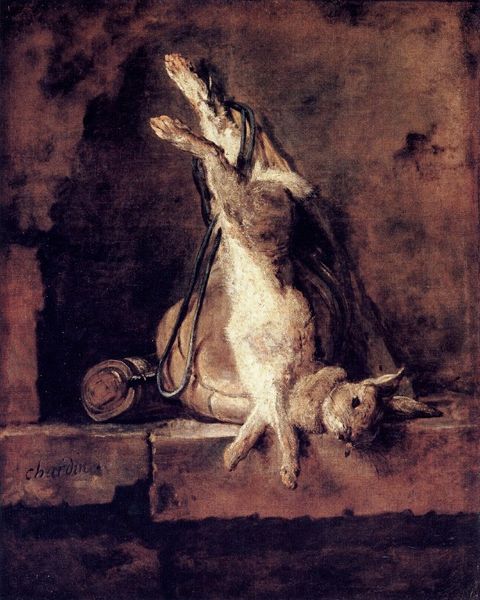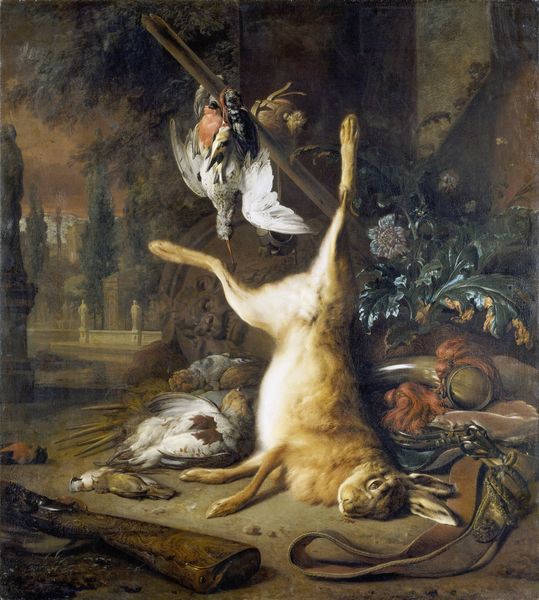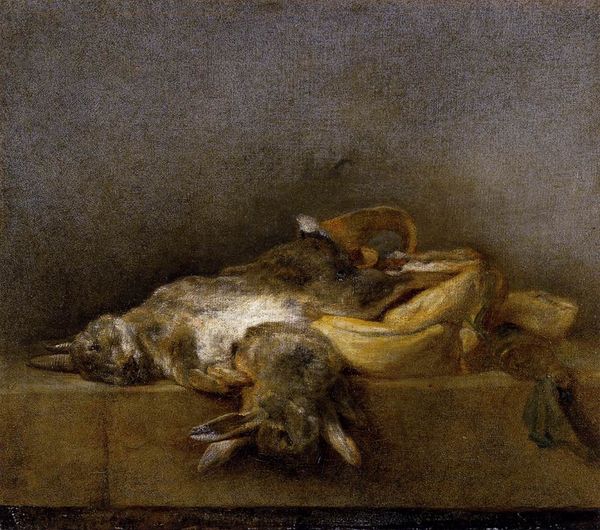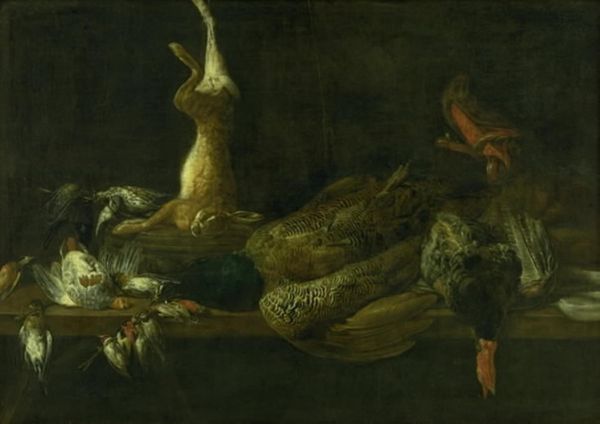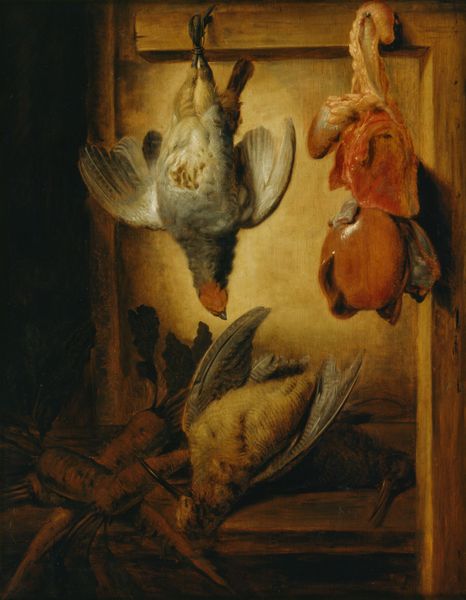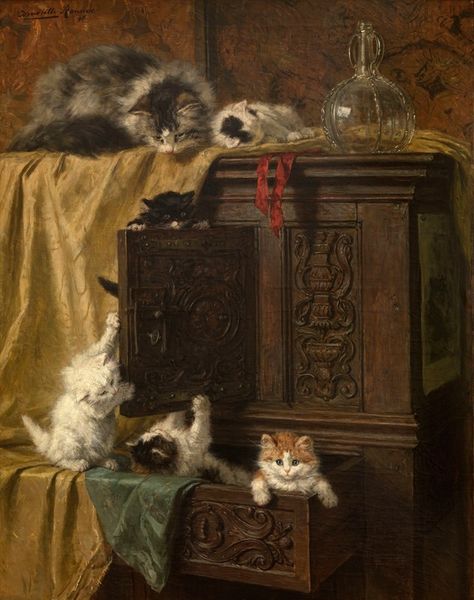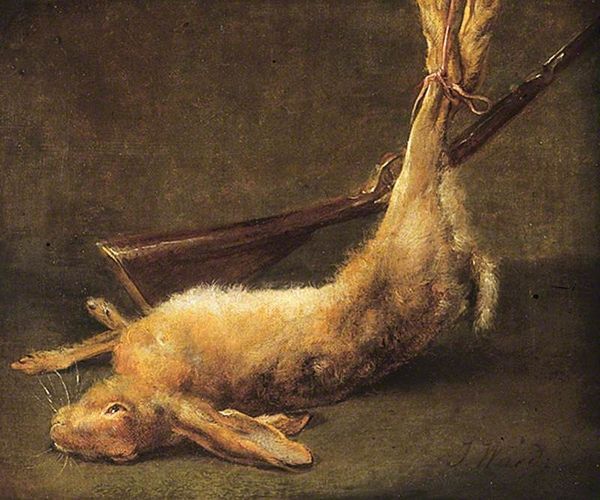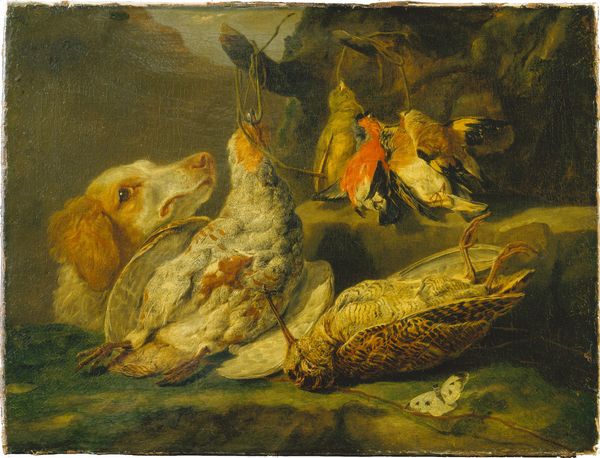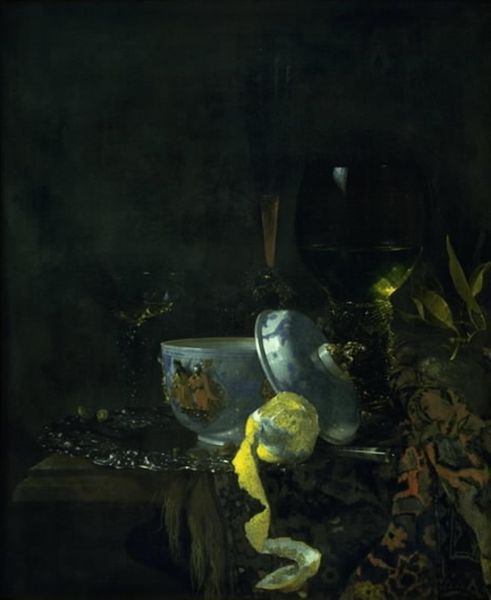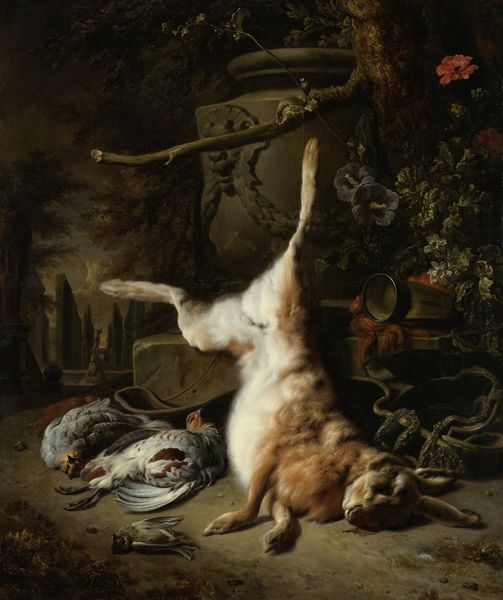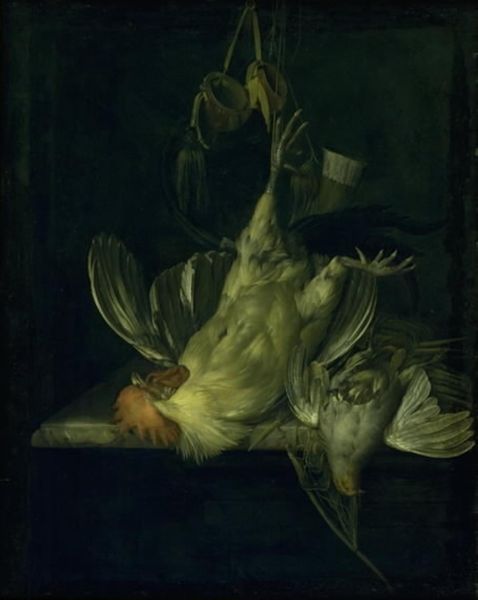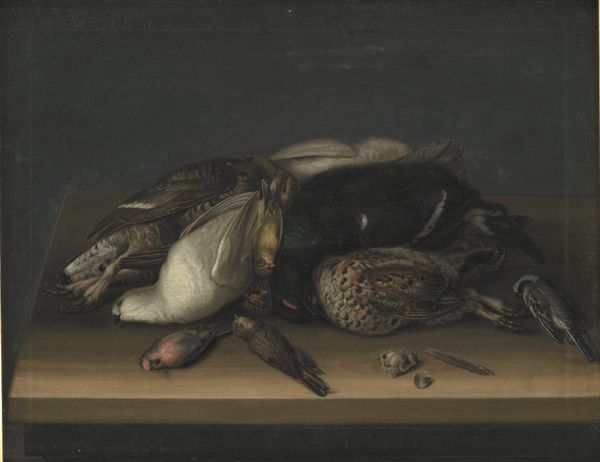
Still Life with Cat and Fish 1728
0:00
0:00
jeanbaptistesimeonchardin
Thyssen-Bornemisza Museum, Madrid, Spain
painting, oil-paint
#
food
#
baroque
#
animal
#
painting
#
oil-paint
#
oil painting
#
rococo
Dimensions: 79 x 63 cm
Copyright: Public domain
Curator: Let’s discuss Jean-Baptiste-Siméon Chardin’s "Still Life with Cat and Fish," created around 1728. You can currently find it here in the Thyssen-Bornemisza. Editor: My initial reaction is… rather unsettling. There's a tension between the domestic tranquility one expects from a still life and the predator-prey relationship glaring right at you. The cat is so possessive. Curator: Indeed, there is a carefully orchestrated display here. Chardin has presented the cat not merely as an animal, but as a symbol of the domestic order, or perhaps disorder. Consider the still life tradition: often interpreted as vanitas, reminders of mortality and the fleeting nature of earthly pleasures. Does the cat disrupt that message or reinforce it? Editor: It complicates it, definitely. The fish, hung up, awaiting the cook's pan... That’s a straightforward vanitas element. But the cat, alive, actively claiming its prize? That brings a different dimension into play, perhaps challenging a passive acceptance of fate with raw instinct. It begs questions about who gets to enjoy earthly pleasures and who becomes them. Curator: A nuanced point. One might even interpret the fish, both dead and alive through the cat's gaze, as symbolizing different levels of consciousness. The cat, through its very nature, embodies instinct and earthly desires. Do you think that Chardin is referencing our inherent animalistic drives? Editor: It’s hard not to. It forces us to confront the way human societal structures intersect with our primal selves. Food, after all, has always been central to cultural identity and power dynamics. In this case, the fish are literally suspended, waiting for the moment that they change state. The cat has a plan, however. Curator: This contrast he presents resonates so well. Chardin really plays with the darker symbolism, embedding complex notions of natural order, consumption, and perhaps even, survival. Editor: It certainly provides a perspective on 18th-century domesticity, where our pets, just as much as we are, can find themselves negotiating morality against the backdrop of day-to-day living. A deceptively thought-provoking composition.
Comments
No comments
Be the first to comment and join the conversation on the ultimate creative platform.
